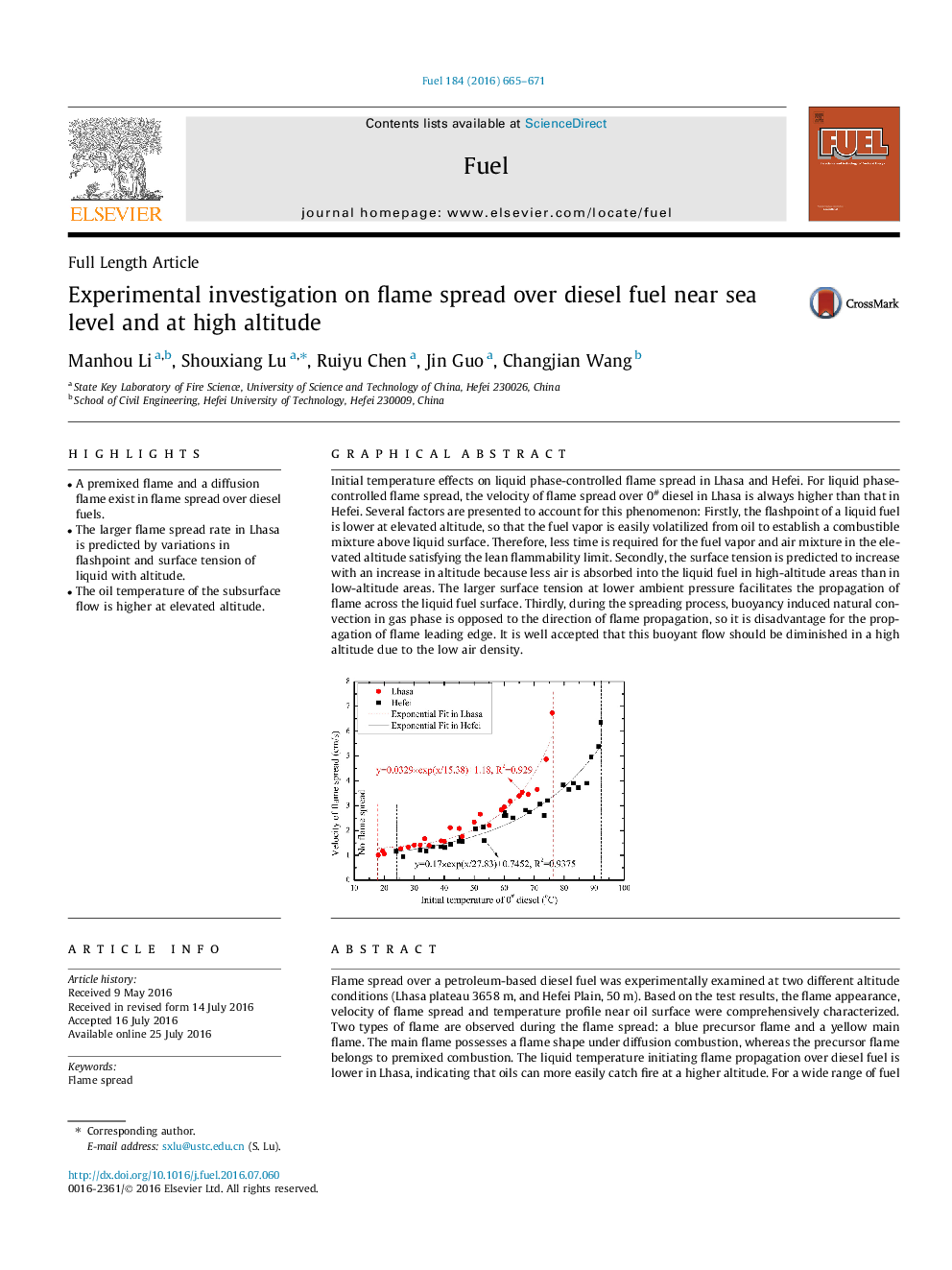| Article ID | Journal | Published Year | Pages | File Type |
|---|---|---|---|---|
| 6633116 | Fuel | 2016 | 7 Pages |
Abstract
Initial temperature effects on liquid phase-controlled flame spread in Lhasa and Hefei. For liquid phase-controlled flame spread, the velocity of flame spread over 0# diesel in Lhasa is always higher than that in Hefei. Several factors are presented to account for this phenomenon: Firstly, the flashpoint of a liquid fuel is lower at elevated altitude, so that the fuel vapor is easily volatilized from oil to establish a combustible mixture above liquid surface. Therefore, less time is required for the fuel vapor and air mixture in the elevated altitude satisfying the lean flammability limit. Secondly, the surface tension is predicted to increase with an increase in altitude because less air is absorbed into the liquid fuel in high-altitude areas than in low-altitude areas. The larger surface tension at lower ambient pressure facilitates the propagation of flame across the liquid fuel surface. Thirdly, during the spreading process, buoyancy induced natural convection in gas phase is opposed to the direction of flame propagation, so it is disadvantage for the propagation of flame leading edge. It is well accepted that this buoyant flow should be diminished in a high altitude due to the low air density.143
Keywords
Related Topics
Physical Sciences and Engineering
Chemical Engineering
Chemical Engineering (General)
Authors
Manhou Li, Shouxiang Lu, Ruiyu Chen, Jin Guo, Changjian Wang,
